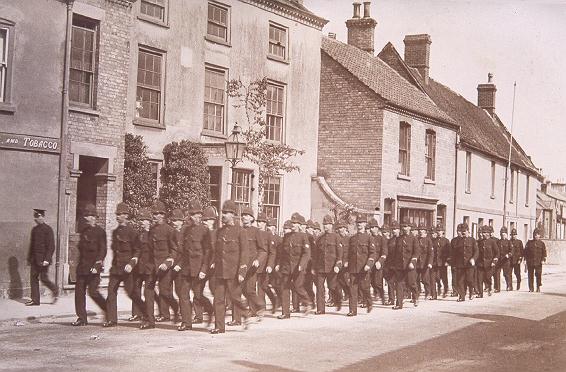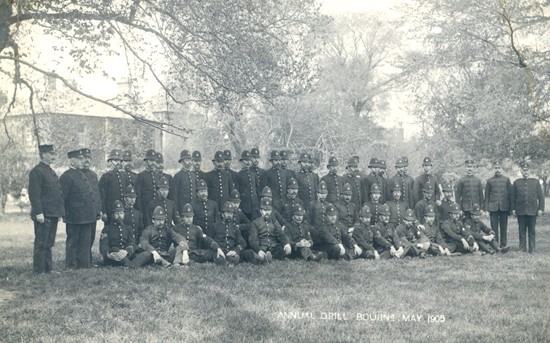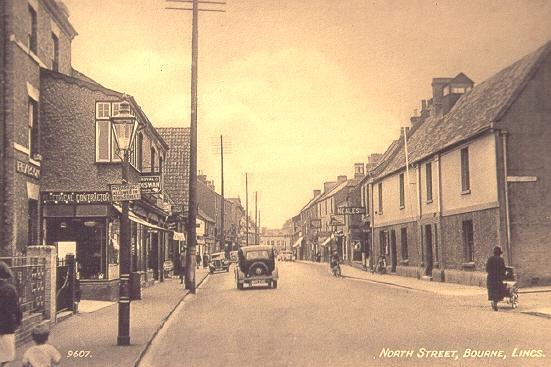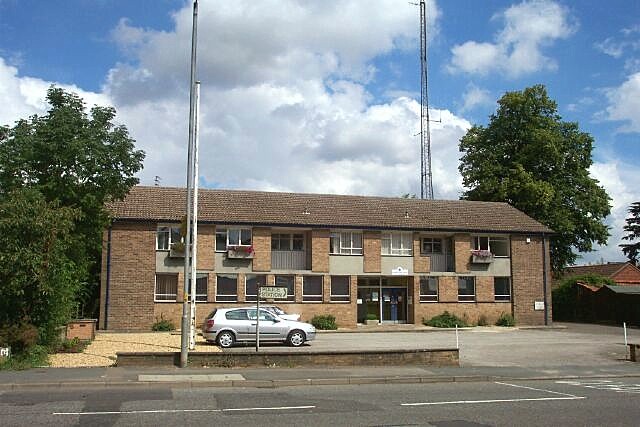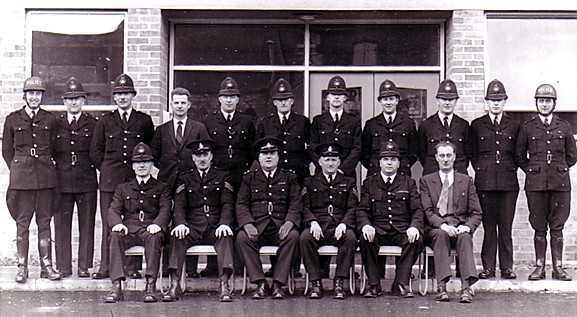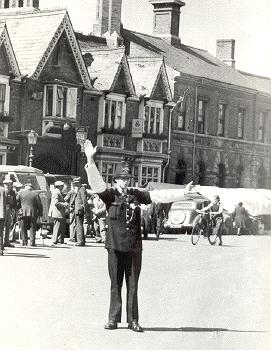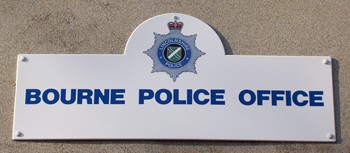Until the formation of an established police force, the maintenance of law and order was in the hands of parish constables appointed annually by the magistrates. They were usually farmers and yeomen who combined their official duties with their normal work. Riots and disturbances were not uncommon and when such events were anticipated they called on a body of special constables who were recruited and sworn in from various walks of life provided they were of respectable character, such as
labourers, shop keepers, clerks, tradesmen and even pensioners. This enabled the parish constable rally a large body of men to a given place
at` short notice and if the incident got out of hand, then they could call out the military. The appointment, however, did not last. Those who paid the rates from which his wages came objected to the expense and he was discharged. The situation came to light at the Kesteven Sessions held at the Town Hall, Bourne, on Tuesday 2nd July 1849 when the chairman, Lieutenant-General William Johnson, told the court at the start of the proceedings that although the were few cases to be heard, the county was not in the same condition to be equally the subject of congratulatory remarks. "I am sorry to add that the depredations recently committed in this neighbourhood have been numerous", he said, "and I am therefore almost inclined to wish that the calendar had been heavier. Some years ago, the people of Bourne consented to pay for a policeman, a course which was very advantageous. But as an experience, they did not like the payment, the officer has been discharged and since that period depredations have very much increased. I think that those who wanted protection were the proper parties to pay for it." But changes were on the way. The official police
force we know today began with the County and Borough Police Act of 1856 which brought together the Lincolnshire divisions of Lindsey, Holland and Kesteven, that included Bourne, and a meeting of magistrates appointed the first chief constable, Captain Philip Blundell Bicknell, who was interviewed and selected from 102 applicants on 19th December 1856. Although there was only one chief constable, each of the three divisions was to have its own police force although overall, it was known from the start as the Lincolnshire Constabulary. The Bourne contingent was in place by Friday 15th May 1857 when the Stamford Mercury reported: “This long looked for force arrived in Bourne last week and we are gratified in being able to state that already a considerable improvement may be noticed. This was fully apparent on Monday last when the loiterers at the corners were much surprised at the order to ‘move on’ which they also found would be to their advantage promptly to obey. No less than six or eight cases of petty larcenies have occurred and parties have been apprehended upon suspicion from the neighbouring villages. The town itself is supplied with one superintending officer and two men. Of course, the liberty of the subject will not be necessarily interfered with in the discharge of the duties of the new officers.” In fact, the police presence appears to have had its effect in many areas, notably the annual May Statute Fair which was held a few days later and was normally marred by drunkenness and fighting and frequented by tricksters and pickpockets. The Stamford Mercury reported on Friday 22nd May: "We are glad to notice a decided improvement in the manners and appearance of those who attended. Not a single case of disorderly conduct took place that required the interference of the police who were very alert all day." At this time, the population of Bourne was 3,720 (1851 census figure) but the police strength increased as the town expanded and by 1861 a permanent police headquarters had been established at the corner of Burghley Street and North Street complete with offices, cells and hostel accommodation for officers so enabling them to be available on 24-hour call. There were then 16 officers but this had increased to 19 by 1875 and the coming of a regular police force brought a considerable decrease in crime and general lawlessness. One local historian noted: "Although the conduct of the people has vastly improved, their honesty is undoubted, and, with a few unhappy exceptions, the country people are extremely sober."
Parish constables were also appointed to assist the regular force, particularly in rural areas, and on 23rd February 1888, the following people were selected at a vestry meeting to serve for the ensuing year for the parish of Bourne and the hamlets of Dyke and Cawthorpe:
Bourne and Tongue End: William Hall, cabinet maker, Charles Meadwell,
cottager, William Roslin, farmer, Joseph Norman, bricklayer, John Harrison,
plumber, John Stubley, coachsmith. The Great War of 1914-18 necessitated numerous changes in the police force after recruiting for military service considerably depleted the numbers stationed in Bourne. In 1916, several officers who had retired and placed on the pension list were re-sworn in as constables and Mr Matthew Leeson, who had moved to the town two years before after retiring from the Manchester police force, was also sworn in as a constable.
From 1857 onwards, policemen on foot patrol day and night were a
familiar and comforting sight and during the early years of the 20th century
when the motor car was becoming popular, uniformed officers could be seen
regularly on point duty to keep vehicles moving in the increasingly busy town
centre, especially on market days when stalls erected at the kerbside reduced
the amount of road left for passing traffic. But when the first traffic lights
were introduced in 1973, they were no longer necessary and so began the
reduction in the police presence on the streets.
The police station in North Street continued in use until 1960 when it was replaced by a new building in West Street while the old premises were demolished to make way for a block of old people’s maisonettes. The new facility, however, was downgraded to office status in 2000 only open five days a week (closed for lunch) and an indeterminate staffing level for duties in the town. Yet by 2013, Lincolnshire police had 1,100 sworn officers, 149 community support officers, a new breed of police men and women although with limited powers, 415 civilian support staff with 232 special constables, 80 police volunteers and 118 cadets working on a voluntary basis, and an annual spending budget of £114 million.
In the past 150 years, modern policing methods have changed drastically through the introduction of mobile patrols, new technology, shorter working hours and fewer points of personal contact, with the result that Dixon of Dock Green, the friendly neighbourhood constable, has all but disappeared. There is undoubtedly increased efficiency in some areas but public concern persists, particularly among the elderly who feel unsafe because petty crime frequently goes unchecked and that their environment and well being is threatened by litter, graffiti, vandalism, yobs on the street corner and other anti-social behaviour that is not investigated, and there is a frequent cry for a permanent return of the bobby on the beat who was such a familiar and reassuring sight in past times.
NOTE: Photo of the county force badge courtesy Lincolnshire Police. REVISED FEBRUARY 2015 See also Memories of the bobby on the beat The Special Constabulary Lincolnshire Doorstep Crime Initiative
Go to: Main Index Villages Index |

